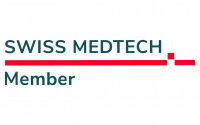BLOG
Telecom26 blog
Tech Tips #13: How can we bring eSIM convenience to industrial devices and routers?

— eSIMs provide a software-based solution (from the user perspective) that enables a compatible mobile device to support multiple eSIM profiles, and to add these using over-the-air delivery. As such, they remove the pain of changing a physical SIM, the hassle of shipping SIMs to users, and support issues that may result from issues when inserting and configuring a local SIM.
All well and good – and the market has responded favourably to their availability. According to the GSMA, there are expected to be more than 6.7 billion eSIM connections by 2030[1]. That’s more than 75% of all smartphones, so they have certainly been a success by any measure, and that success is set to grow inexorably.
But what about IoT devices? Many other kinds of ‘things’ are designed to connect to mobile networks to enable remote control and monitoring, as well as data collection. The number of these devices is probably uncertain – estimates vary – but it has been reported that there are already more than 15 billion of these[2].
While not all use cellular networks, it’s a pretty fair bet that the number of mobile-connected IoT devices is – and definitely will be – far in excess of the number of personal communications devices (including smartphones, of course). So, eSIMs would be a powerful enabler to support enhanced connectivity options for IoT applications and the devices that support them. Unfortunately, the convenience of eSIM has yet to make positive inroads into the general IoT market.
Why hasn’t this been done before?
That’s a very good question, thank you for asking! It’s not that the industry hasn’t recognised this need – it’s more that the task of enabling IoT devices to accommodate eSIMs hasn’t been straightforward. For eSIM to work, the device requires specialised software to manage the profiles on what’s known as an eUICC on the device. This stands for “Embedded Universal Integrated Circuit Card” and, traditionally has been integrated in the device/modem. However, there are two problems with the consumer approach to eSIM that mean it cannot readily be applied to IoT devices.
First, few devices are shipping with the embedded version today. That’s expected to change, but with devices typically required to have a long life in the field and complex certification processes, it’s naturally going to take some time for these to be replaced with compatible solutions.
Second, even if you have an eUICC that is in the SIM card format and can insert it into a device, how can the profiles be added or changed? With consumer devices, their inbuilt software allows the user to simply navigate to the appropriate screen and then change to another profile from those available. But with most IoT devices, even those with an eUICC card, that’s just not possible because they don’t have an interface that enables profiles to be changed — either locally or remotely.
How will this change?
Well, the industry is aware of this limitation and the impact it has had on the market for cellular IoT connectivity. At present, those IoT devices that do ship with mobile connectivity capabilities are limited to the SIM that is installed – either in the factory or subsequently, in the field. In most cases, this is tied to a specific operator, that may – or may not – offer attractive rates in different countries.
The GSMA, which advances leadership in the eSIM field, produced an M2M specification and standard for eSIM[3], which is designed to facilitate the remote provisioning of IoT devices and eSIM profiles to be loaded and changed, depending on requirements. However, this had high implementation costs and proved to be useful only for very large-scale deployments. As a result, it has seen only minimal adoption.
Building on this, GSMA then introduced a new standard — SGP.32[4] — however, this will take time to implement and to test for compliance. Currently, there’s a gap between demand and what can realistically be delivered by the industry. So, what’s to be done? What we need is a way to leverage the benefits and convenience of consumer eSIM – which works just fine – for IoT devices.
That’s why we developed our own solution – enabling eSIMs to be used by IoT devices. With the Telecom26 approach, IoT devices can support multiple eSIM profiles and switch between them, as required. How does this work?
Enabling eSIM for IoT devices - now
Telecom26 has developed a special version of what’s called a ‘Local Profile Assistant’ (LPA) – specifically for devices. LPA is used for consumer eSIMs and is essentially a software package that resides on a mobile phone — Android or iOS — and allows users to download and change eSIM profiles.
There isn’t (currently) a widely available equivalent of this for IoT devices, although as we noted above, the GSMA is working towards such a solution. But, in the absence of this, Telecom26 has developed its own version for IoT, which we call the LPAd solution. This is compatible with the OpenWRT[5] operating system, which is commonly used by IoT routers and devices.
So, with Telecom26’s LPAd solution, device manufacturers can upgrade their platforms to support consumer eSIMs on eUICC SIMs provided by Telecom26, which can be inserted into the device slot on a router. With the LPAd software installed, the routers can be remotely managed and eSIM profiles loaded onto them – and changed, as required, which means that any OpenWRT compatible router can easily be upgraded to use eSIM profiles.
Telecom26 – where do we go from here?
In time, the GMSA will update its standards and we expect that a standardised approach will start to become accepted. However, this will take several years. The Telecom26 approach enables router manufacturers to adopt eSIM services today, so that their users can benefit from the flexible connectivity to mobile networks this offers.
Telecom26’s LPAd solution provides an elegant fix to the shortcomings of the current approaches, bringing consumer ease to the IoT market. It is fully compliant with all GSMA-certified eUICC consumer cards. The LPAd application also conforms to the GSMA’s eSIM certifications and is compliant with any approved SMDP+ RSP platform, as well as OpenWRT routers. Of course, users can benefit from our network connectivity and bundles, but they can also choose other eSIM profiles, fostering choice and delivering the flexibility many require.
As a result, any modern router that is based on OpenWRT can benefit from the Telecom26 LPAd application. Telecom26 will track the standards and ensure compliance with the GMSA, when the standard is sufficiently mature to enable widespread adoption of eSIM in IoT and M2M devices. But until then, the Telecom26 approach gives router manufacturers the opportunity to unlock the benefits of eSIM – and connectivity to our network, bringing consumer-like convenience to the world of IoT.
[1] https://data.gsmaintelligence.com/dashboards/research/research-2022/esim-market-progress-consumer-behaviour-and-adoption-to-2030
[2] https://connect.comptia.org/blog/top-internet-of-things-stats-facts
[3] https://www.gsma.com/esim/esim-m2m-specifications/
[4] https://www.gsma.com/esim/resources/sgp-32-v1-0/
Link to the IoT SIMs service overview in the resource library - LP for download.



